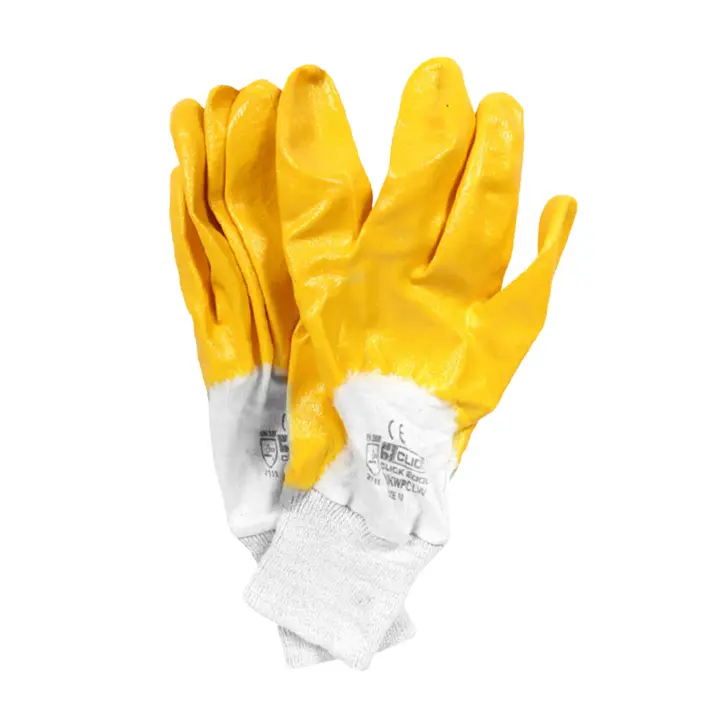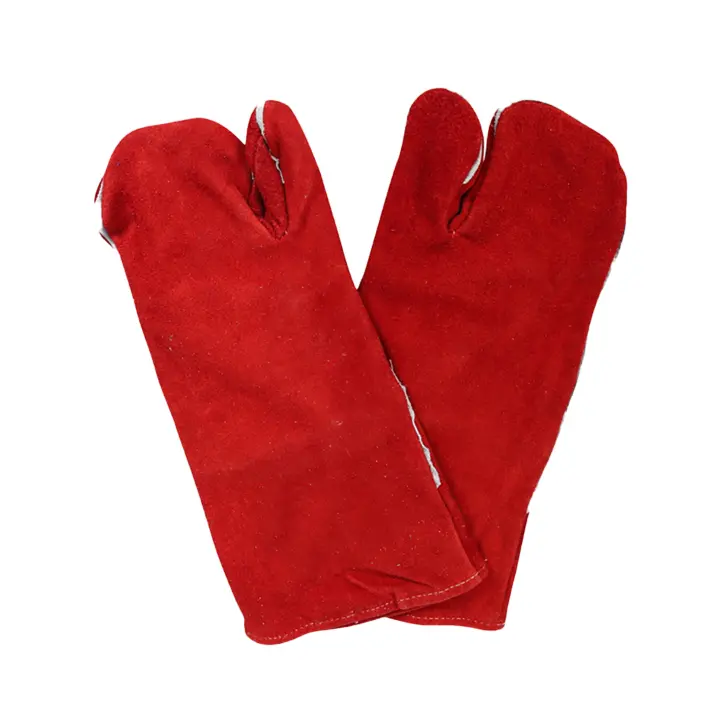Manual construction work puts a lot of strain on the hands, particularly in harsh or abrasive conditions. That’s where safety gloves come in, as a form of personal protective equipment (PPE) on site. Not all are the same, though.
This article covers the common types available, how each works, and where it’s best used.

Coated Fabric Gloves
These are general-purpose gloves made from cotton or other fabrics, with a coating that makes the material tough enough to handle punctures and cuts. They also offer better resistance to chemicals, abrasion, and temperature than uncoated fabric gloves.
Common coatings include nitrile, latex, polyurethane (PU), and PVC. Nitrile, for one, gives a rubber-like finish that’s hard to tear or pierce.
These Nitrile Coated Gloves are good examples. The yellow coating is woven with natural cotton. It’s durable under abrasions, cuts, tears, and punctures, and is suitable for daily use. Even better, it’s EN 388 3.1.1.13 approved, which means they’ve been tested for protection against mechanical risks.
Latex leaves a rough-textured palm on the glove to reduce slippage. PU and PVC add chemical and abrasion resistance, along with improved grip and dexterity. Take these Nylon PU Gloves, for instance. The nylon liner is lightweight, stretchy, and breathable, paired with a PU coating that adds a tacky, smooth finish.
Coated fabric gloves do offer some chemical resistance, but they shouldn’t be used in place of chemical gloves when the job calls for it.
Disposable Safety Gloves
Even with just cleaning, your hands can be at risk in the presence of chemicals and irritants like oils or residues from adhesives or paints. Considering the possibility of contamination, gloves in such conditions must be thrown away after use—enter disposable gloves.
They are suitable for tasks requiring hygiene, such as cleaning up after a spill on a construction site. You can choose from latex, nitrile, or vinyl.

Leather Safety Gloves
Leather comes from animal hide, like cowhide, pigskin, and goatskin. Gloves built with this material are designed not only for rough materials and sparks but also for heat, such as from welding or the friction of a rope sliding across your palms.
Reinforced stitching and additional padding are included for heavy-duty performance. That’s how they get their thick, rugged feel—ideal for rough surfaces, sharp objects, or cutting or grinding machinery.
Leather gloves offer a degree of heat protection, but they may not be suitable for extreme temperatures unless rated for it.
Grip Gloves
This type of safety glove falls into a category focused on traction, through coatings or textured surfaces, like nitrile, PU, or rubberised patterns. They can also be made from various base materials like nylon, polyester, or cotton.
Grip gloves are suitable for assembly, warehouse work, material handling, or multi-purpose use, like these MP1 Grip Gloves. This pair has a rubber-coated palm with a knitted base. It also conforms to EN 388 2.2.4.3, which rates the glove’s resistance to mechanical hazards.
Vibration-Dampening Gloves
These gloves have special padding, usually in the palms and fingers, to absorb and cushion the constant or heavy vibrations from power tools and machinery, like:
- Jackhammers
- Drills
- Chainsaws
- Concrete breakers
- Grinders
- Impact wrenches
Wearing a pair is recommended in road and groundwork, demolitions, and drilling and cutting operations.
Safety Gloves for Construction and Building Trades
Safety gloves protect your hands from hazardous materials, chemicals, and tools—without getting in the way of your dexterity or skill. But like any PPE, these gloves are not one-size-fits-all.
Protection comes down to choosing the right glove material for the job. We hope these options have given you ideas on what you can use for the job at hand.
We supply a range of personal protection equipment beyond safety gloves, including hard hats and height safety / fall arrest. For enquiries, contact us at +44 28 9442 8611 or email customercare@s-pgroup.com.